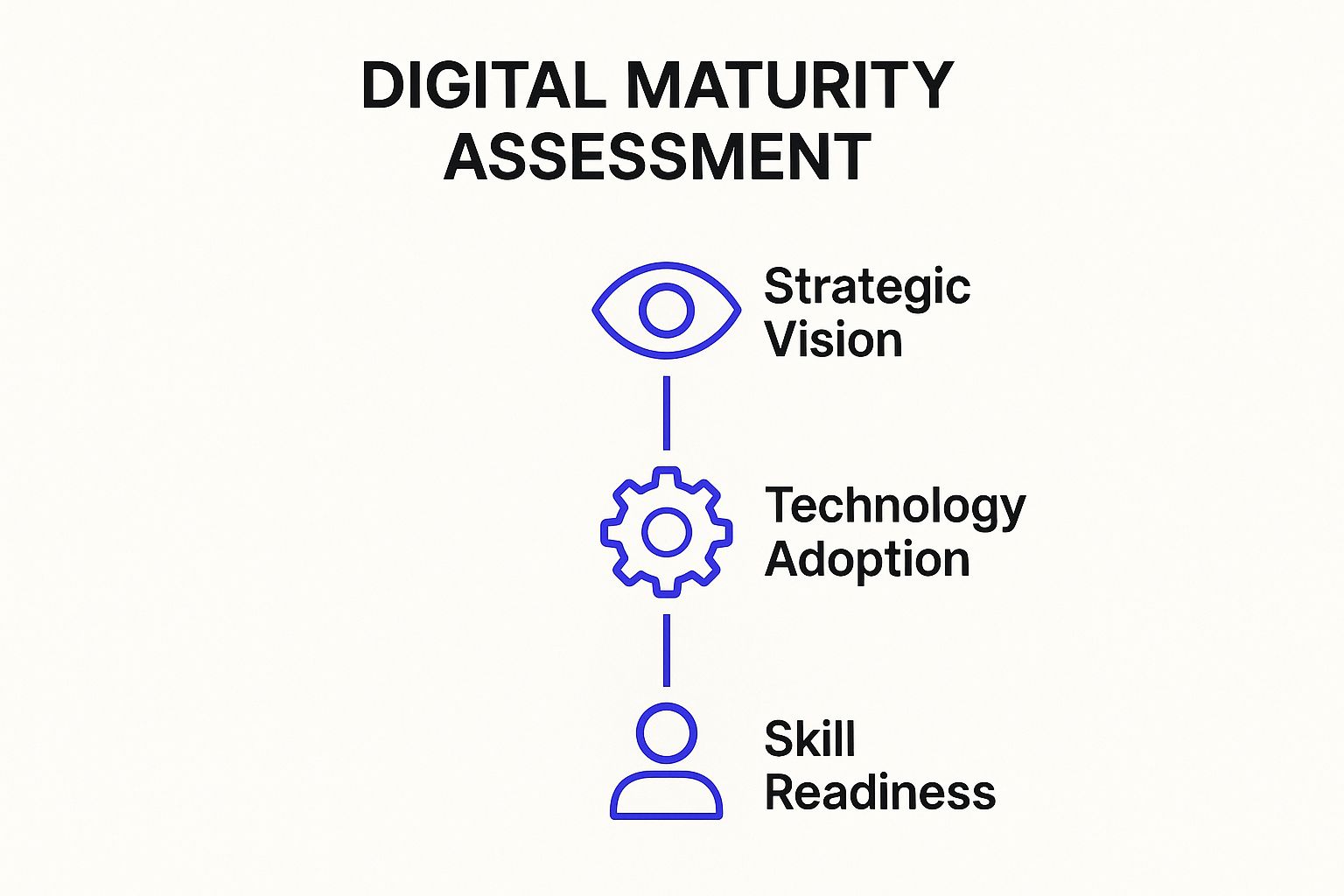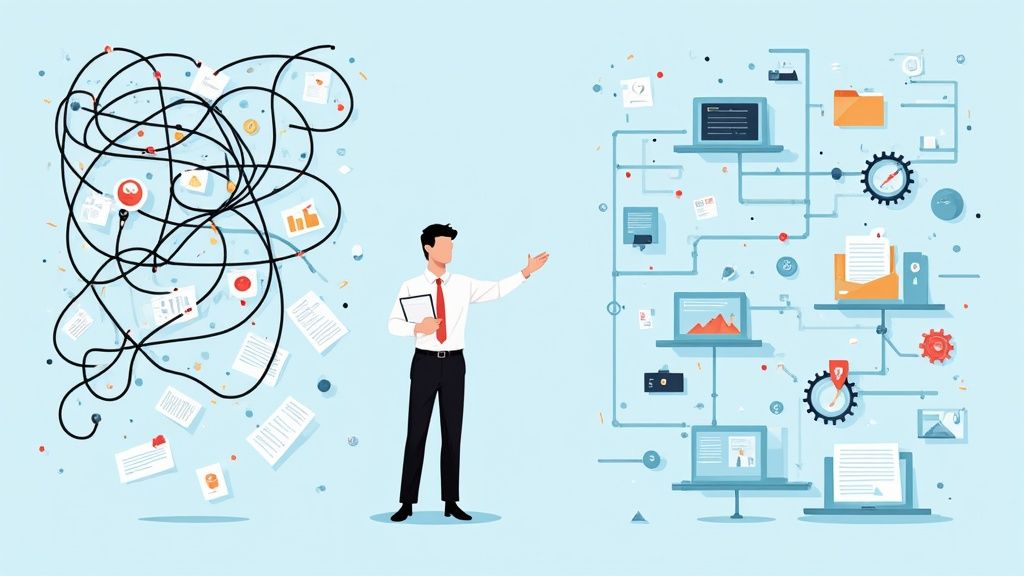Let's cut through the jargon. Digital maturity consulting isn't about buying the latest tech or chasing trends. It’s a structured way of figuring out how well your organisation is actually using its digital tools, data, and processes to create real business value and, just as importantly, free up your team's time.
What Is Digital Maturity Consulting Really?
So many leaders we talk to feel like they're navigating through a constant state of operational fog. Their teams feel disconnected, key processes are clunky, and far too much time is lost to manual workarounds. The shiny new software they bought last year? It often falls flat because the real issues—how people work together and the processes they're forced to follow—haven't been touched.
This is exactly where digital maturity consulting brings some much-needed clarity.
It all starts with a simple, honest question. How well are your people, processes, and technology aligned to get you where you want to go? It’s a way of moving beyond abstract targets to find the real blockers holding you back. Instead of just recommending another platform, this approach maps out how work actually gets done inside your business.

Beyond the buzzwords.
Too often, "digital transformation" gets thrown around as a vague, intimidating project with no clear finish line. A proper assessment cuts through that noise by zeroing in on tangible, measurable areas.
- People: It looks at your team's skills, their confidence with the tools they have, and whether the company culture is ready for change. Are people empowered by the tech they use every day, or just frustrated?.
- Process: This is about your workflows. Are they streamlined and effective, or are they riddled with bottlenecks, data silos, and repetitive manual tasks that drain everyone's energy and focus?.
- Technology: It takes a hard look at your entire tech stack. Are your systems talking to each other, or are they operating in isolation, creating friction and duplicated effort?.
By starting with your people and their daily work, this kind of consulting uncovers the root causes of inefficiency. It's not about judging where you are now. It is about establishing a clear, honest baseline to build from.
The real goal of assessing digital maturity isn't to achieve a perfect score. It's to build an organisation that is more open, capable, and operationally sustainable—one where technology serves your people, not the other way around.
From fog to focus.
Ultimately, digital maturity consulting gives you a practical roadmap for improvement. It helps you prioritise where to put your money, whether that’s in training, process optimisation, or new technology.
The outcome isn't just a report full of recommendations. It's a clear path toward sharper decisions, reclaimed time, and a much stronger operational foundation for the future.
We believe true progress comes from embedding new capabilities within your team, ensuring you own the solution long after the engagement ends. It's about creating digital sovereignty—a state where your organisation has the clarity and skills to adapt and thrive on its own. This people-first perspective is what turns the abstract concept of digital maturity into concrete, sustainable results you can feel every day.










